15 Nights / 16 Days

2 Nights Haridwar - 2 Nights Barkot - 2 Nights Uttarkasi - 2 Nights Rudra Prayag - 01 Night Kedarnath - 2 Nights Badrinath - 3 Nights Ghangria - 01 Joshimath.Table Drinks, Laundry, Porter, Pony, Tips, Camera Fee, Ropeway Charges (Auli & Hardwar), entrance charges, personal expenses of the clients or any other expenses incurred due to bad weather, road closure, landslides etc. and anything not specified in cost include.3.09% Govt. Service Tax.15-0602-10
Arrival Delhi Railway Station, Meet & Assist further drive to Haridwar. Later drive to Haridwar transfer to your Hotel. Visit Har-ki-Pauri for Ganga Aarti in evening.
Haridwar: Haridwar, lying at the feet of Shiva's hills, i.e., Shivaliks, in the Haridwar district of Uttaranchal Pradesh, is a doorway. Suryavanshi prince Bhagirath performed penance here to salvage the souls of his ancestors who had perished due to the curse of sage Kapila. The penance was answered and the river Ganga trickled forth forms Lord Shiva's locks and its bountiful water revived the sixty thousand sons of king Sagara. In the traditional of Bhagirath, devout Hindus stand in the sacred waters here, praying for salvation of their departed elder. It is doorway to the sources of the Ganga and the Yamuna, 3000 to 4500 meters up into the snowy ranges of the central Himalayas. The 'Aarti' worship of the Ganga after sunset and the floating 'dia' (lamp) is a moving ritual.
Temples & Sight Seeing – Har-ki-Pauri, Chandi Devi & Mansa Devi Temple, Daksha Mahadev Temple, Bilkeshwar Mahadev, Anandmai Ashram, Pawan Dham, Bhooma Niketan, Vaishno Devi Temple, Doodhadhari Temple & Bharat Mata Mandir.
Drive to Barkot via Dehradun & Mussoorie. Enroute visit Kempty Fall and others later drive straight to your Hotel for night halt.
Drive to Hanuman Chatti, from here you have to take local jeeps for Janki chatti (It helps to reduce the trek upto 8 kms), trek start from here to Yamunotri (6kms). Either by walk or by horse or by Doli at own cost. Arr. Yamunotri, One can cook rice by packing it in a cloth and dipping it in the hot water of the hot Kund. Pilgrims take this cooked rice home as "Prasad". Here near the temple "Pooja" can be offered to Divya Shila, after taking bath in Jamunabai Kund's warn water and having "Darshan" of pious "Yamunaji" returning to Hanumanchatti. Later drive back to Barkot. Overnight stay at Hotel.
Hanuman Chatti: The confluence of Hanuman Ganga & Yamuna River.
Yamunotri Temple: Maharani Gularia of Jaipur built the temple in the 19th Century. It was destroyed twice in the present century and rebuilt again.
Surya Kund: There are a Number of thermal springs in the vicinity of the temple, which flows into numerous pools. The most important of these is Surya Kund.
Divya Shila: A rock pillar, worshipped before entering the Yamunotri Temple.
Drive to Uttarkashi via Barkot. Check in Hotel, Later visit Vishwanath Temple. Night Halt.
Uttarkashi: Situated at the bank of river Bhagirathi. The temple of Lord Vishwanath is located here where a massive iron trident is erected. The other important temples situated here are Ekadash Rudra, Bhairav, Gyaneshwar and Goddess Kuteti Devi.
We proceed to Gangotri (3048 mts), enroute we enjoy picturesque Harsil village, Bhagirathi River and the most magnificent view of the Himalayas. After Gangotri Darshan we return to Uttarkashi. Overnight stay at Uttarkashi.
Gangotri Temple: The temple, constructed by the Gorkha General Amar Singh Thapa in the 18th Century, is situated on the right bank of Bhagirathi.
Submerged Shivling: Submerged in the river, this natural rock Shivling is the place where, according to mythology Lord Shiva sat when he received the Ganga in his matted lock. It is visible in winter months when water level decreases.
Kedar Ganga Sangam: Around 100 Yards from the Ganga Temple flows the river Kedar Ganga. Starting from the Kedar Valle, this river meets the Bhagirathi on its left bank.
Early morning, drive to Rudraprayag enroute visit Tehri Dam. Check in Hotel, night halt.
Rudraprayag: It is the confluence of river Mandakini and river Alaknanda.
Temples: Rudranath and Chamunda Devi, Koteshwar Temple (3 Kms).
Morning drive to Gaurikund, Trek start from Gaurikund to Kedarnath (3584 mts) on foot or on by pony / Doli. Tour members should carry personal medicines, heavy woolen, toiletries and clothes for an overnight halt at Kedarnath. Check in Hotel. Later visit Kedarnath Temple. Night halt.
Gaurikund: At a distance of 5kms from Sonprayag and at an altitude of 1982 meters. One can take bath in the hot water pond here and visit the Gauri Temple. This is the place where Goddess Parvathi meditated to attain Lord Shiva. It is the base for a trek to Kedarnath.
Kedarnath: The Kedarnath shrine, one of the 12 jyotirlingas of Lord Shiva, is a scenic spot situated, against the backdrop of the majestic Kedarnath Range. Kedar is another name of Lord Shiva, the protector and the destroyer. According to legend, the Pandavas after having won over the Kaurava in the Kurukshetra war, felt guilty of having killed their own brothers and sought the blessings of Lord Shiva for redemption. He eluded them repeatedly and while fleeing took refuge at Kedarnath in the form of a bull. On being followed he dived into the ground, leaving his hump on the surface. The remaining portions of Lord Shiva appeared at four other places and are worshipped there as his manifestations. The arms appeared at Tungnath, the face at Rudranath, the belly at Madhmaheshwar and his locks (hair) with head at Kalpeshwar. Kedarnath and the four above-mentioned shrines are treated as Panch Kedar.
Early morning, after Temple Darshan trek down to Gaurikund. Later, drive to Rudraprayag via Guptkashi. Check in Hotel at Rudraprayag. Night Halt.
Drive to Badrinath via Joshimath. Check in Hotel. Later at evening visit Badrinath Temple for Aarti. Overnight stay.
Badrinath one of the 'Four Dhams' is one of the most celebrated pilgrimage spots of the country and is situated at an elevation of 3,133 meters, guarded on either side by the two mountain ranges known as Nar & Narayan with the towering Neelkanth Peak providing a splendid backdrop. This revered spot was once carpeted with wild berries. Thus the place got the name "Badri Van", meaning "forest of berries".
Brahma Kapal: A flat platform on the bank of river Alaknanda where Hindus perform propitiating rites for their deceased ancestors. (Rs. 1000/- per person).
Tapt Kund: Natural thermal springs on the bank of the river Alaknanda, where it is customary to bathe before entering the Badrinath Temple.
Narad Kund: A recess in the river, near Tapt Kund, forming a pool from where the Badrinath idol was recovered.
Sheshnetra: 1.5kms. Away is a boulder having an impression of the legendary serpent, better known as the Sheshnag's eye.
Charanpaduka: 3kms. Away is a beautiful meadow where the footprint of Lord Vishnu is seen on a boulder.
Mata Murty Temple: Devoted to the mother of Sri Badrinathji. Other important temples include Sesh Netra Temple, Urvashi Temple and Charanpaduka.
Mana Village: Inhabited by an Indo-Mongolian tribe, it is the last Indian village before Tibet.
Vasundhara: As the name suggests, Vasundhara is a magnificent waterfall. This place is 5 kms. From Badrinath out of which 2 kms. Is motor able upto Mana.
Bhim Pul: On the other side of Mana village, a massive rock forming a natural bridge lies over the roaring Saraswati River. It presents a spectacular view of water thundering down through the narrow passage under the rock and is believed to have been placed there by Bhim, the second eldest among the five Pandava brothers.
Vyas Gufa (Cave): Near Mana Village, this is a rock-cave where Ved Vyas is believed to have composed the Mahabharata and the paranoiac commentaries.
Early morning departure at 0600 hrs in the morning proceeds towards Ghangria. On arrival at Ghangria for night stay.
Now comes the most difficult part, the 14 km trek from Govindghat to Ghangria. But first we have to reach Govindghat, which is a 21 km drive from Joshimath. It is raining in the morning - we haven't still got used to the mountain ways where rain doesn't affect one's routine. We take a Sumo to drive through the most dangerous road in our lives. The road is narrow, sometimes just makeshift after a landslide, and we can see river Alaknanda thundering along down below. Reaching Govindghat, one has to walk about a km to reach the bustling small town, which serves mostly as a starting point of the trek to Hemkund Sahib, the beautiful lake, considered holy by the Sikhs. We see Sikhs, Sikhs, and more Sikhs. In fact, there are so many of them that we start wondering if there is anybody at all going to the Valley of Flowers. We enter one of the numerous dhaabas there and catch a cup of hot tea. Standing in the back window of the dhaba, we can see the pilgrims moving slowly along the steep track on the mountain, wearing shiny colorful raincoats. That makes us wonder if we should buy a raincoat too. Thought of investing money in a raincoat, just for this trek, makes us hesitant. But an enquiry reveals that these are temporary raincoats, just plastic sheets in the appropriate shape, which one can pull over one's head, and it cost a ridiculous Rs 15. As it turned out later, we haven't ever invested Rs 15 better! Those raincoats turned out to be the most useful thing we carried.
We move out of the town by crossing a foot bridge on the river which flows through Govindghat, and start climbing the track. There are lots and lots of mule-waalas who offer to take us up. There are also porters (called Pitthoo) who offer to carry out luggage on their backs. In our initial enthusiasm and confidence, we ignore all porters and climb on with our luggage, not knowing how it was going to turn out, this being our first experience of the kind. The track is littered with mule dung and there is strong smell of mule dung which persists till Ghangria. The track is crowded by Sikh pilgrims - they move along frequently chanting "Sat-naam, waahe guru!" mainly to help themselves go on. There are mules carrying goods and mules carrying people. One has to be careful and move to the hill-side (not the down-slope-side) when a mule comes along, otherwise the danger of being accidentally pushed over the slope is very real.
Slowly we realize the mistake of not getting a porter to carry our luggage. The climb is mostly steep, and occasionally levels out. But we put up a brave face and carry on. The path moves along river Lakshman Ganga, which flows down below. As we move up, we come closer to the level at which the river flows. There are tea and snack stalls along the way, which serve tea, "Maggie" noodles, aloo-prathas, chips etc. Anything you buy here is costlier than Govindghat, mainly because everything has to be hauled up on mules. We break our journey frequently, stopping for tea, noodles or parathas.
On the way, we pass the Bhyundaar village which looks picturesque, set in the middle of the mountains and the river flowing through it. Further up and we are able to climb down and reach the river. We decide to relax for some time next to the river. The flow is strong and nobody dares climb down into the cold water. Our eyes are peeled for flowers, and we already spot species of Cobra Lily, Clematis vine, and the beautiful Inula, which is sunflower like flower. Our flower hunt has already begun.
The trek continues and the last bit is a very steep climb which tires out everybody. The rule of the mountains is that one shouldn't get disappointed with the tiring climbs - one is always rewarded with a beautiful view from the top. We feel rejuvenated on spotting a mile-stone which says, Ghangria 1 km. We spot a helipad on the side and a few tents, probably belonging to some organized tour company.
We rest a bit and then go for the final walk which takes us into Ghangria, a small village by the side of the river Lakshman Ganga. Ghangria, it seems, serves only one purpose - act as a base camp for people going to Hemkund and the Valley of Flowers. There no houses visible - only hotels. The passage through the village is narrow, uneven, strewn with mule-dung wetted with rain, lined with hotels on both sides. It is like a crowded bazaar. The biggest building there is the Gurudwara. The GMVN guesthouse is fully booked in advance. We realize the mistake of having started a bit late in the morning, and taking a bit longer to reach up, because of carrying our luggage on our own - the hotels are all packed. Seemed to be an unusually crowded day. With difficulty, we manage to find a place for the night. They provide us with blankets, and there are shops where blankets and sleeping bags can be rented. The Gurudwara is always a fallback option for staying - it provides free accommodation to anybody who comes, and provides them with a blanket.
We have dinner at one of the many restaurants there, all of which serve almost identical menu, a typical city Punjabi food, and retire for the night. The next morning we get up and look for a better accommodation, which is easily available, because people returning from Hemkund the previous night, are all leaving for Govindghat. We are raring to go into the valley, and start off after getting some parathas and boiled eggs packed.
When we started out from Ghangria, if we had taken the right side path, it would lead us to a difficult and steep climb which goes on for 5 km. And it takes one to an altitude of 4,329 meters! Hemkund is a beautiful lake at this altitude, surrounded by snow peaks. There is a gurdwara, Hemkund Sahib, and a Lakshman Temple on the banks of this lake. At an altitude of 4,329 meters, these are the highest places of worship in India. Hemkund literally means 'lake of ice' - and true to its name, for eight months of the year this lake is frozen and inaccessible. When the weather warms up, the ice and snow melt, and meadows of ferns and moss and wildflowers sprout on its banks. Then, in their thousands, Sikhs climb the steep stone path to the lake and bathe in its chilled waters. They come in the belief that Guru Govind Singh meditated here in a previous birth. For the non-religious, the place holds its charm with its aquamarine lake surrounded by beautiful peaks. And this is the right altitude for many rare flowers. The famed Brahmakamal grows in abundance amidst the rocks on the banks of the lake.
The Valley of Flowers is a 3 km climb from Ghangria. We walk out of Ghangria, from the side opposite to the one from which we entered the previous day. We cross a bridge across Lakshman Ganga, which we see falling down from the rocky mountain far away. It originates from the Hemkund Lake. After the bridge, the path bifurcates - the right one goes to Hemkund, and the left one leads to the Valley of Flowers. No mules are allowed into the Valley, although you can ride one right upto Hemkund. And the difference is noticed soon - the smell of mule-dung which had gotten to our heads, is replaced by pleasant smell of vegetation. We cross the check post after entering our names in the register, and paying a nominal fee. There is a stream coming down from the left, and one has to cross it over a makeshift bridge. The path goes down, and there is an iron bridge over Pushpawati River which hurtles down with great fury, and meets Lakshman Ganga at Ghangria. Exotic flowers start right from here. Blue poppies are here on the rocks beside the bridge, but most visitors walk past without noticing them. Interestingly, there are only a few who keenly look for flowers - most have either yoga or meditation on their mind, or are just trekkers looking for a beautiful place.
Start after breakfast and trek to Govindghat. Lunch on the way. From Govindghat, take a shared Sumo to Joshimath. Overnight stay at Joshimath.
Early morning departure from Joshimath towards Deo Prayag, for holy dip at Deo Prayag.
Deo Prayag for Holy Bath at Ganges. Situated at the confluence of Alaknanda and Bhagirathi rivers, it is commonly believed to be the birthplace of Ganga. Breakfast / Lunch enroute.
Drive back to Delhi. On Arr. Delhi, transfer to Railway Station / Airport. Tour Terminate.
We are Leading Travel Agent for Kerala, Goa, Jammu & Kashmir, Himachal Pradesh, Uttarachal, Rajasthan & Waj Taj Tour & Spl. in Char Dham Yatra, Pilmirage Tours and Proding Tour Operators, Airline Ticketing, Hotel Booking, Car & Coach Rental, Passport & Visa Services.
We are Special for Char Dham Yatra. Read More...
 13D/12N
13D/12N
Haridwar - Barkot - Yamunotri - Uttarkashi - Gangotri - Rudraprayag - Kedarnath - B..
 13D/12N
13D/12N
 3D/2N
3D/2N
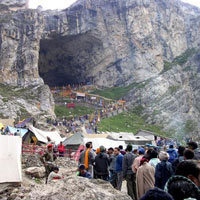 4D/3N
4D/3N
 5D/4N
5D/4N
New Delhi - Haridwar - Devprayag - Badrinath - Rudraprayag - Pipalkoti
 12D/9N
12D/9N
Rishikesh - Barkot - Yamunotri - Uttarkashi - Gangotri - Rudraprayag - Kedarnath - ..
 12D/11N
12D/11N
New Delhi - Haridwar - Barkot - Yamunotri - Uttarkashi - Gangotri - Rudraprayag - K..
 8D/7N
8D/7N
New Delhi - Haridwar - Rampur - Kedarnath - Badrinath - Deo Prayag - Guptakasi - Pi..
 6D/5N
6D/5N
New Delhi - Haridwar - Badrinath - Deo Prayag - Pipalkoti - Rudra Prayag
 16D/15N
16D/15N
New Delhi - Bikaner - Jaisalmer - Jodhpur - Ranakpur - Jaipur - Agra - Mandawa - Ti..
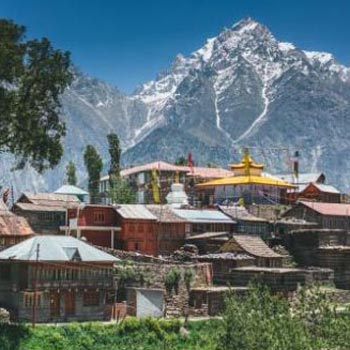 16D/15N
16D/15N
Shimla,Kinnaur,Manali,Amritsar Romantic ..
Shimla - Kinnaur - Manali - Amritsar
 16D/15N
16D/15N
Bikaner - Jodhpur - Jaisalmer - Mount Abu - Chittorgarh - Pushkar - Ajmer - Jaipur ..
 16D/15N
16D/15N
Golden Triangle with Yoga Meditation Tour
New Delhi - Agra - Jaipur - Rishikesh - Haridwar
 16D/15N
16D/15N
16 Days North & South India Tour
Agra - Jaipur - Bangalore - Periyar - Mumbai - Mahabaleshwar
 16D/15N
16D/15N
Mumbai - Goa City - Belgaum - Bagalkot - Badami - Hassan - Mysore - Bangalore - Hos..
 16D/15N
16D/15N
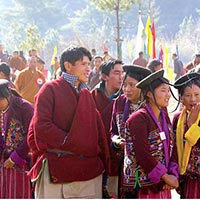 16D/15N
16D/15N
 16D/15N
16D/15N
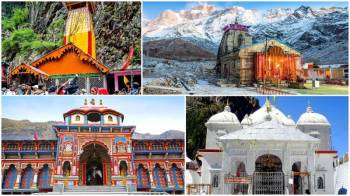 8D/7N
8D/7N
 11D/10N
11D/10N
10 Nights Uttar Pradesh Tour Package Fro..
New Delhi - Agra - Prayagraj - Lucknow - Mathura - Varanasi - Ayodhya - Vrindavan -..
 11D/10N
11D/10N
10 Nights - 11 Days Char Dham Yatra Pack..
Kedarnath - Badrinath - Yamunotri - Gangotri - Rishikesh - Rudraprayag - Uttarkashi..
 11D/10N
11D/10N
10 Night 11 Days Uttarakhand Tour Packag..
Kedarnath - Badrinath - Yamunotri - Gangotri - Rishikesh - Rudraprayag - Uttarkashi..
 11D/10N
11D/10N
10 Night Uttarakhand Tour From Haridwar
Haridwar - Kedarnath - Badrinath - Yamunotri - Gangotri - Rishikesh - Barkot - Gupt..
 11D/10N
11D/10N
10 Night 11 Days Uttarakhand Tour Packag..
Kedarnath - Badrinath - Yamunotri - Gangotri - Rishikesh - Rudraprayag - Uttarkashi..
 10D/9N
10D/9N
Uttrakhand Tour Package 9 Night - 10 Days
Haridwar - Kedarnath - Badrinath - Yamunotri - Gangotri - Uttarkashi - Guptakashi
 10D/9N
10D/9N
Uttarakhand Tour Package 9 Nights - 10 D..
Haridwar - Kedarnath - Badrinath - Yamunotri - Gangotri - Uttarkashi - Guptakashi
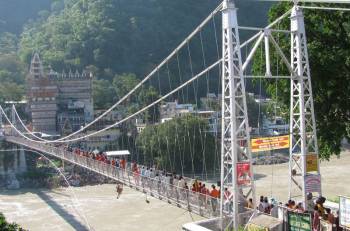 4D/3N
4D/3N